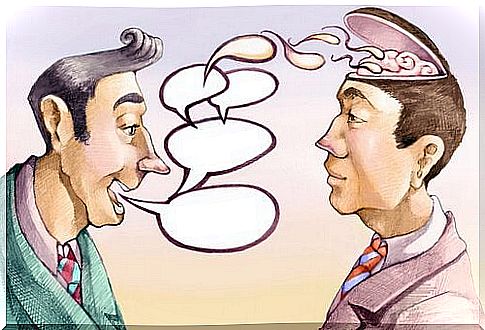Strengthening Social Skills – 11 Useful And Practical Pieces Of Advice

How do you react to criticism? Can you fall back on a large repertoire of communication skills? Do you know that you can improve your social skills?
Our social skills are learned behaviors. Strengthening our social skills is just as necessary as learning to walk, read or write.
As we noted earlier, social skills are all of the behaviors necessary to be able to interact and relate to others in an effective and satisfying way. In the following, we will introduce you to some communication techniques that you can use to strengthen your social skills, so that you can improve relationships with people around you and resolve personal conflicts more easily.
11 useful and practical pieces of advice to build social skills
1. The technique of the described CD
This technique consists of repeating what we want to express or want to achieve over and over again, no matter what the other says: “I understand, but I am not interested, thank you.” – “I understand, but I will not sign a contract, thank you. ”-“ No thank you, no interest. ”
2. The negative assertion
The negative assertion is a way of responding to legitimate criticism without justifying yourself too much: “It took you a long time to get your job done.” – “That’s right, I could have been faster, I’m sorry.”
3. The negative question
It is useful for finding out what others think, which makes communication easier when we are criticized. In this way we can achieve that others criticize us honestly: “What bothers you about the way I express myself?” – “What is so bad about going to the theater?” – “What do you dislike about the way I am dress me? “
4. Asking questions
By asking questions, we can help others become aware of an impulsive response: “Are you upset about something?”
5. Disarm anger
The point is to ignore the content of the angry message (e.g. insults, criticism …) and to draw our attention and the conversation to the fact that something is annoying the other person. For example, we can focus the content of the conversation on a certain behavior that we have observed in the other person.
6. The sandwich technique
One of the most effective techniques for improving our social skills is to always start with something positive. This is followed by something that could be improved and at the end you add a few constructive and confidence-building words: “You can tell that you are making an effort to change your attitude towards…. And you can tell that you have improved. You could improve that though. However, I am sure that you can implement this in the near future. “
7. Repeat what the other is feeling
You repeat what the other person says to signal that you have understood their message, but without agreeing to it: “I know that it is very important to you that I lend you my car, but …”
8. Show affection
Showing affection is fundamental to maintaining a healthy relationship. Sometimes you have to do more than just express something in words, such as a hug, a kiss, a tenderness, or a smile. Showing emotions can also strengthen our social skills.
9. Make compliments
Just as we like to receive compliments ourselves, we also need to learn to give compliments.
10. I-messages
I-messages are used to express your opinion and beliefs to others without generalizing, because others do not necessarily have to share this opinion. “I think that …” – “I think that …” – “In my opinion …”
11. Have a conversation
In a conversation, it is important to strike a balance between listening and speaking so that our participation is an enrichment for everyone. Useful behaviors include looking at the other person, respecting when the other person has the floor, giving signals that you are listening to the other person (nodding your head), talking about something similar to the other person, or signaling when the topic is is changed, etc.
We will always find something that we can improve on in our social skills. The most important thing, however, is to get excited about it and put it into practice.









